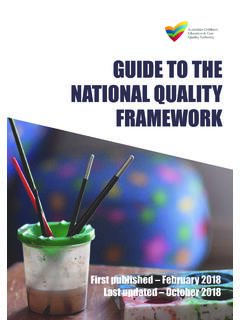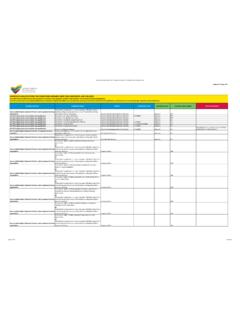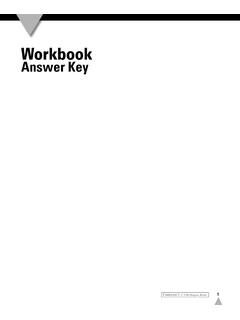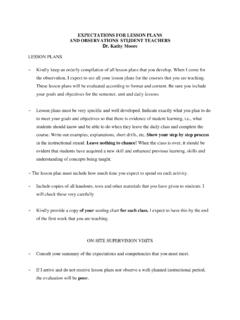Transcription of Inclusion of Children with Additional Needs
1 Community Child Care Victoria 2009 - 1 - Inclusion of Children with Additional Needs Self- guided Learning Package This resource was developed by Community Child Care (CCC) with funding provided by the Australian Government Department of Education, Employment and Workplace Relations under the Inclusion and Professional Support Program (2008-12). The Inclusion and Professional Support Program is funded by the Australian Government Department of Education, Employment and Workplace Relations. Community Child Care Victoria 2009 - 2 - About Self- guided Learning Packages Self- guided Learning Packages can be completed in your own time and convenience and offer an alternative to attending training sessions.
2 This package aims to develop skills and knowledge that will be valuable to you in providing quality education and care programs. Packages are often used for professional development by staff teams, networks and other groups of Children s services professionals. You can work through the package with colleagues by reading the package together, discussing the information and collaborating to complete the one assessment task. Gowrie Victoria Leadership and Learning Consultants are available to support you while working through the package.
3 Feel free to phone or email if you require any assistance completing the tasks within the package. Phone 1800 103 670 (freecall) or (03) 9347 6388 or email Community Child Care Victoria 2009 - 3 - Introduction The term Inclusion has traditionally been used to describe bringing Children with disabilities into regular settings rather than placing them in special facilities (Connor, 2006, p8). This concept and practice is far removed from earlier beliefs and practices of placing Children with Additional Needs in institutions or segregated services, or expecting them to fit into mainstream programs where their differences could be fixed in order to make them more normal.
4 The Early Years Learning Framework and the Framework for School Age Care suggest that Inclusion involves taking into account all Children s social, cultural and linguistic diversity (including learning styles, abilities, disabilities, gender, family circumstances and geographic location) in curriculum-decision making processes. The intent is to ensure that all Children s experiences are recognised and valued, and that all Children have equitable access to resources and participation, and opportunities to demonstrate their learning and to value difference (EYLF p24 & FSAC p22) This self- guided learning package will allow you to consider and reflect on your ideas, beliefs and attitudes about diversity and Inclusion , providing reflective questions to assist you to feel more informed and confident including Children with Additional Needs in the future.
5 Specifically it will address: Barriers to Inclusion obstacles that cam sometimes get in the way Family-centered practice what does it mean and what does it look like Accessing support how and why of Additional support options The Commonwealth Government of Education, Employment and Workplace Relations (DEEWR, 2010) use the term Inclusion indicator for statistical purposes on Children s enrolments, which are separated into the following areas of need: Indigenous Indicator this is based on a families self identification.
6 The commonly accepted definition is that the person is of Aboriginal or Torres Strait Islander decent; identifies as an Aboriginal or Torres Strait islander, and is accepted as such by the community in which they live. Disability Indicator this is based on the child s underlying long-term health condition or disability which presents the need for Additional assistance compared to Children of a similar age in areas of: learning and applying knowledge, education; communication; mobility; self care; interpersonal interactions and relationships; and others including general tasks, domestic life, community and social life.
7 This does not include Children with a medical condition that is short term or episodic such as asthma, allergies, eczema or infectious diseases. Special Needs Indicator this is based on the child s priority grouping: Children from culturally and linguistically diverse backgrounds; Children with a refugee background who have been subject to trauma; indigenous Children ; the child s place has been sought by a state or territory child protection worker; the child is in the care of the state, or other forms of out of home care. The use of these descriptors, or any label however, should be used with caution to ensure that assumptions are not made about Children and their families on the basis of a label alone.
8 Labelling a child by their Needs ignores other important aspects of the child s identity. It also suggests that all people with the same need are part of a homogenous group. Community Child Care Victoria 2009 - 4 - For the purpose of this self guided learning package, the term Additional Needs will be used to refer to Children with a diagnosed or undiagnosed disability and developmental delay. Self Help Question 1 What does including a child with an Additional need mean to you? _____ What ideas, theories and experiences have influenced your definition?
9 _____ Has your definition changed over time? How? Why? _____ Barriers to Inclusion The history of Inclusion is relatively short. Changing views about Children , Children s rights, and education and care, have contributed to changing attitudes and practices on this issue. While the benefits of Inclusion are becoming more widely acknowledged, there are a number of barriers to Inclusion that need to be considered. Being aware of such barriers is an important step in becoming clear about your goals for the future and what you can do to address your most pressing issues or challenges relating to inclusive practice.
10 Such barriers include: Discriminatory attitudes and behaviours of educators, Children , families and the community in general Inadequate or insufficient access to information and resources Minimum licensing requirements: This can put pressure on Children s services to have the capacity to respond to a diverse range of Needs and capacities with minimum resources A lack of available places in child care services is a significant barrier for families seeking to access a place for their child Insufficient support for educators.
















